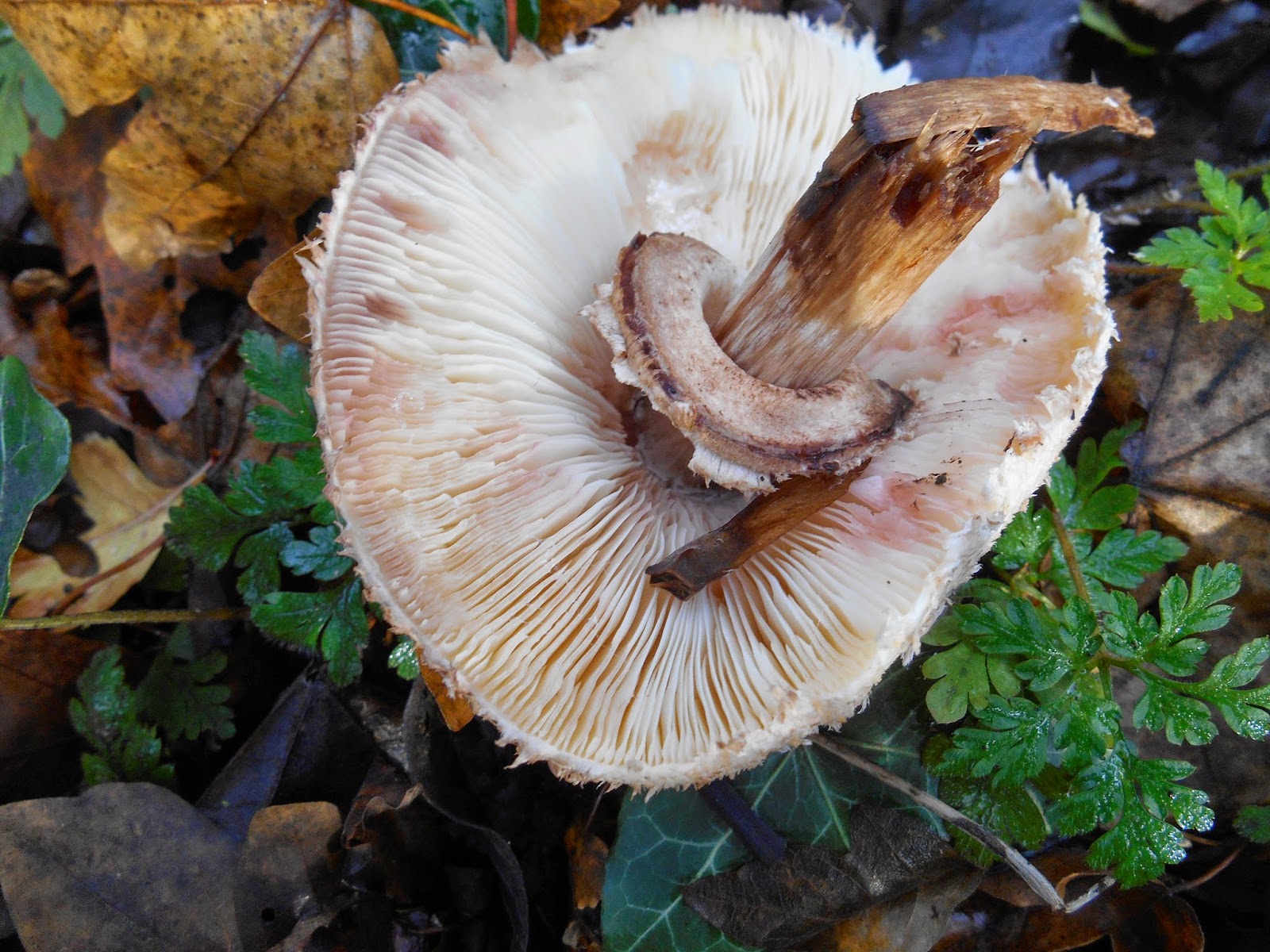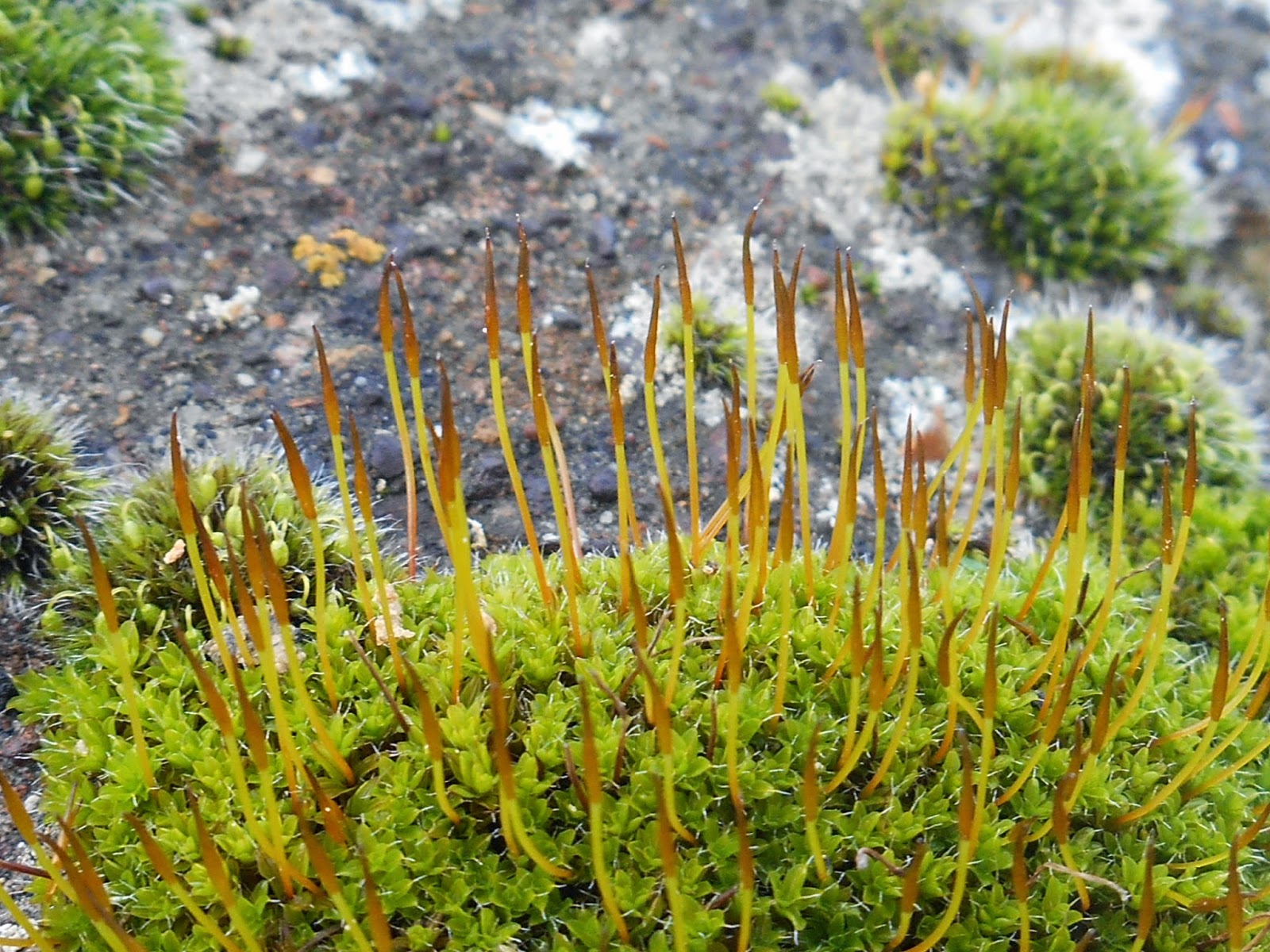Prithee, Tony, what led you down this train of thought?
Strolling through Stefen Leys Pocket Park earlier today I chanced upon a couple of common but interesting fungus specimens. Both were edible, but many people wouldn't apply the word 'mushroom' to them.
 |
| Shaggy Parasol, Macrolepiota rhacodes, var hortensis Stefen Leys Pocket Park, Daventry. 15 December, 2014 |

Although this species is easily identifiable from the patchy appearance of the cap, it is generally a good idea to look underneath to check the form and colour of the gills. These were as anticipated and the smell of the whole fungus was mild and mushroomy.
 |
| Pleurotus ostreatus, Oyster Mushroom. Stefen Leys Pocket Park, Daventry 15 December, 2014 |
The Oyster Mushroom, Pleurotus ostreatus, is common and also edible. Yes, it is called a mushroom, but its cap does not have the disc shape of the Common Mushroom; as it generally grows from the trunk of a tree this is understandable. The group I found were in an ideal condition for gathering and eating but, as they were at the base of a tree adjacent to a footpath, I refrained. Something about dogs...
I was able to get a decent photograph of the gills.
This late in the season I might, in ancient or even reasonably mature woodland, have found other fungi, but beyond the two species photographed I noted only a few more specimens, shriveled or nibbled beyond recognition. However, that is not to say that evidence of their presence was lacking.
At the edge of the site, hard by a garden fence, stood a cherry tree. It was in a bad way, the condition of the lower trunk showing that its days were numbered. The damage demonstrated a classic case of attack by Honey Fungus, Armillaria mellea. It is sometimes called the Boot-lace Fungus and I know that, had I probed the ground nearby I would have found the hyphae (vaguely equivalent to roots in a real plant) like black bootlaces snaking through the soil.
Although the trees were now devoid of leaves a Jay, screaming in the tree-tops, defeated my search for it. This handsome member of the Crow Family is far more often heard than seen.
That left mosses. The bryophyte flora was very limited and, although a hands and knees posture with a Sherlock Holmes-type magnifying glass would probably have paid dividends, I held my enthusiasm in check and contented myself with very obvious species.
 |
| Tortula muralis at Stefen Leys Pocket Park, Daventry. 15 December. 2014 |
The Wall Screw-moss, Tortula muralis, is abundant in rural areas on stonework, walls and neglected footpaths everywhere. I found it at the edge of a concrete path. Mundane, yes; unattractive, no. There are certainly more striking mosses but a careful examination of its features will reveal the delicate form of the leaves with a rather long hair-point at the tip. It beats watching 'Strictly...' [Everything beats watching 'Strictly...' Ed.]
This next moss is, I believe, Kindbergia praelonga. Known as Common Feather-moss it is indeed extremely common but I was rather fortunate in finding a patch with abundant capsules, for these fruiting structures are not often seen.
 |
| Kindbergia praelonga from Stefen Leys Pocket Park, Daventry. 15 December, 2014 |
I brought a sample home and was able to obtain a marginally better photograph which tends to confirm my original identification.
There were a few other mosses about but I know my limitations. Perhaps I'll have another look at them sometime. Anyway, it was a dull day in mid-December; not the most auspicious of times to be out in a patch of urban parkland, so I was content with my findings. As Del Boy would have said, "Multum in parvo my son" - and in a way it was



No comments:
Post a Comment